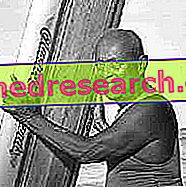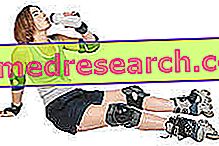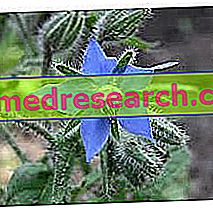By Dr. Luca Franzon
Our society presents a situation in which the birth rate is zero and the average age is rising considerably, with a percentage of the population that is part of the very high third age. Given reality, it is becoming of fundamental importance to study the phenomenon and find solutions to the problems encountered in aging.

Recent studies have shown that a moderate training, continued throughout the person's existence and aimed at certain situations can lengthen life slightly, and delay the onset of various problems caused by the aging process for several years. Fortunately, nowadays even the medical sector is understanding that it is the case to educate the population to the movement. It is not true that the longer age advances the less you have to move, you have to move following precise guidelines. The task of those who work in gyms is to educate the elderly in training, always following two fundamental aspects: collaborating with a doctor who evaluates the health of the new client and propose a training plan as personalized as possible. It is essential to stress that physical activity has multiple benefits for the elderly:
- It has the function of social aggregation, antagonist of solitude, often the companion of the elderly.
- it is healthy already from the first sessions (I manage to put on my own stockings !! After some stretching sessions)
- Can fight some chronic diseases in the elderly (hypertension, diabetes, heart disease, osteoporosis, etc.)
- From aesthetic improvements (more lean mass, less fat mass).
As the years go by, we go against a series of physical problems that affect all the organs of our body. Rational and constant physical exercise causes this degeneration to slow down and in some cases regress.
RESPIRATORY SYSTEM
With the passage of time, the respiratory system goes against different types of problems, hardening of the blood vessels and decrease in the number of capillaries supplying the lungs, loss of function by the respiratory muscles, decrease in chondro-costal articulation, less tissue elasticity of the lungs, with consequent loss of proper respiratory mechanics. The consequence that the previous causes trigger is a rapid breathing, a decrease in vital capacity, respiratory and inspiratory reserve volume, and an increase in dead space and residual volume. Also the VO2 MAX will drop. A small effort will correspond to a great commitment of the respiratory system. Stretching exercises to find the right joint mobility, respiratory gymnastics to regain proper breathing, toning of the respiratory muscles and cardiovascular activity, can give the elderly the right input to ensure that their respiratory system starts working properly again.
SKELETAL SYSTEM
The skeletal and the articular apparatus, with the progressing of the age go against various degenerative phenomena, from the bone demineralization that leads to osteoporosis, to rheumatic diseases, to arthrosis etc. It is known that when the bones are stressed in load they succeed to have minor mineral losses, maintaining a good bone density. It is also proven that the best way to keep joints healthy is to get them moving. There are various stimuli we can give to our skeletal system, from the apparent simple walking, passing through exercises with "anisotonic" equipment, to aerobic activities up to the use of vibrating platforms .
NERVOUS SYSTEM
The nervous system is formed by particular types of cells (neurons) that are not able to reproduce and that in time decrease both in number and in functionality. The causes of this type of degeneration are varied, some of a physiological type and others of a pathological type. Logically, a slowing of the nervous system coincides with a slowing down of all the functions of our body and therefore a slowing down of the life of the relationship. Physical exercise causes more blood to reach the brain, promotes the passage into the blood-brain barrier of neurotransmitters, large proprioceptive stimulations, and slows down old age degeneration. The benefits that training brings to the nervous level, are then transmitted at the level of daily activities, the elderly will be more lucid and more attentive, and will be able to respond better and faster to external stimuli with targeted and precise reactions.
ENDOCRINE AND IMMUNE SYSTEM
Naturally the hormonal secretions with the progress of the years undergo some notable variations. The phenomena we mostly witness are the decrease in "good" GH hormones, Testosterone, Dhea, Thyroid hormones, and an increase in stress hormones Cortisol. The immune system is also affected and weakened by senescence. Some research has shown that regular physical exercise in the elderly blocks the degenerative phenomena of the aforementioned apparatuses and even causes them to start working again in a bland manner but with remarkable results in terms of physical benefits for the elderly.
CIRCULATORY SYSTEM
Recent studies have shown that elderly people trained compared to untrained peers, have increased stroke volume during physical activity, increased oxygen transport, increased contractile capacity of the heart muscle, lower resting heart rates, increased capillary level muscle and lung. Of course having a heart that works well means having fewer health problems and the possibility of having a normal life even in old age.
BODY COMPOSITION
In terms of body composition, different types of changes take place that cause various health problems. As the age advances the body goes against dehydration. An example of a problem that this phenomenon brings with it is the dehydration of the intervertebral disc, which ensures that the discs are less swollen and resistant and become drier and harder, thus less able to absorb certain types of stress without incurring trauma. Even the lean mass, fat mass components are modified. Fat mass increases at the expense of the muscle causing both aesthetic and functional problems. Regular exercise can cause the fat to decrease and the muscle to hypertrophy.
POWER
Muscle strength also decreases and with it the percentage of fast type muscle fibers at the expense of slow fibers or fibrous tissue or muscle fat. The muscle loses order in the sense that the zeta lines break causing less functional contractions. The number and size of mitochondria decreases. In a nutshell the muscles are no longer able to fully perform their tasks. Even in this case, regular exercise can cause certain balances to re-establish itself in the muscles, for white fibers to increase in number at the expense of red ones, for the mitochondria to increase in number and size, for the muscle to be more vascularized.
In addition to the more common goal of improving cardiovascular and metabolic function, interventions must positively intervene in improving muscle mass, strength, power, flexibility is the bone mineral mass (BMD) Buchner D et al Clin Geriatr Med 1992 ; 8: 1-17 Bassey E et al Clin Sci 1992; 82: 321-7
Muscle strength is independently associated with functional abilities in Elder Hyatt R et al Age Aging 1990; 9: 330-6 Buchner D, de Lateur BJ Ann Behav Med 1991; 13: 91-8
Since aerobic exercise does not improve strength production in Elder Thompson R et al J Am Geriatr Soc 1988; 36: 130-5 Klitgaard H et al Acta Physiol Scand 1990.
muscle strength may become the limiting factor for daily activities more than cardiovascular function in the elderly Pendergast et al J gerontol 1993; 45: 61-7 .
Initially it was thought that the increase in strength caused by training in the elderly was caused exclusively by adaptations of the neurological type Morirani et al Gerontol 1980; 35: 672-82 instead we saw that there is an effective growth of muscle mass in elderly males and females.
Therefore physical exercise also benefits muscle level, with a very fast and important response. Imagine the benefit of being a little stronger, how much independence from an older person (manage to carry shopping bags alone !!!).
PSYCHOLOGICAL ASPECT
Last not least. Loneliness and a sense of powerlessness in the face of advancing age are two phenomena that often give great problems to elderly people. Sport is socialization, it's increasing self-confidence, it's fun, it's health. As far as the Fitness sector is concerned, it is necessary to do the way in which the elderly are allowed to enter their center. Advice, specific courses or training at quiet times with low and non-aggressive music, without super athletes posing as Super Man.
Keep in mind that the elderly are a target that will soon become fundamental for the economy of the Sport Centers. The important thing is to be able to offer an adequate service and give results. The elderly must not go to the Olympics but it is not even a desperate case (except for serious pathologies) so it is a subject that responds to the principles of training often more than one can imagine !! I also remind you that in addition to an interesting economic income, the elderly are a large income of a human kind. It's nice to hear stories from them, it makes them feel good and they often teach us something. I conclude with two questions: what is the animal that at birth walks on all fours, in adulthood to two and in old age to three? The answer is the man !! The second is what is the best habitat for this animal during its life ??? What questions ..... The Gym !!!!
Over 60 Gymnastics to Improve Circulation and Strengthen Joints
X Problems with video playback? Reload from YouTube Go to Video Page Watch the video on youtube



